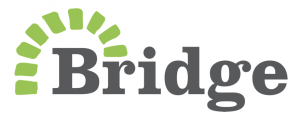How do we make invisible girls visible? A gender data revolution may be the answer
International Women’s Day (IWD), Wednesday 8th of March, the world celebrates the achievements and contributions of inspiring girls and women across the globe. But it cannot celebrate those who are invisible. Yet, there is a sizeable number of women and girls who are still invisible.
SDG 5 – the United Nations Sustainable Development Goal which supports female equality – aims to “achieve gender equality and empower all women and girls” by 2030. Nearing the halfway point, many key indicators are very far from hitting targets; sadly, that includes education.
As a key foundation of equity, education is an essential area where solutions must be offered.
One of the biggest barriers to reaching gender equity is the lack of global data on girls and women – making it challenging to develop solutions.
A recent UN Women article highlights that only 48% of the data required to monitor SDG 5 is available. The article powerfully states: “Where data are missing, women and girls are invisible.”
In Sub-Saharan Africa, the lack of data on learning outcomes and education is huge. Data is missing for both girls and boys, but girls are impacted more as learning inequities are more common. A 2022 UNESCO GEM report reveals that there is no data at all on the learning levels of two-thirds of African children.
Capturing data is a core part of the Bridge model. By supporting government partners to track data, girls who were previously invisible are seen – meaning support can be given to ensure excellent learning outcomes.
A recent study shows the benefits of Bridge’s model. By tracking student progress across indicators like attendance and academic performance, data can be used to develop methods and techniques that directly promote learning outcomes for girls.
To see increases in learning outcomes for girls in Africa, it is essential that governments and education stakeholders are supported in education programs and systems that embrace the potential of capturing learning data.
Setting up strong learning foundations for girls
Having access to education, and the support to attend school is often the first learning barrier many girls face.
UNESCO highlights that the gap in attendance between girls and boys is narrowing – but in some regions, such as Sub-Saharan Africa, girls are still less likely to be in and stay in education.
Improved learning, and learning outcomes, make it more likely girls will attend school, and stay on.
The Nobel Prize Laureate Professor Michael Kremer found the opposite when he led a study of NewGlobe-supported schools in Kenya. His 2022 report revealed that learning gains were equally large for girls and boys in Bridge schools.
The findings contrast with established research which shows girls in Sub-Saharan Africa are consistently disadvantaged in learning with lower literacy rates than boys even when both have the same educational attainment.
Representation and positive role models
For girls to engage and succeed in school, they must feel represented and have positive role models.
This can be challenging in Sub-Saharan Africa, with a 2019 study highlighting: “arguably, the most common barrier for girls [in Sub-Saharan Africa] has been the lacking societal sense of entitlement to education.”
Bridge schools across Nigeria aim to break down these barriers. By ensuring girls are represented and encouraged to learn, an environment is built that engages them. A few examples of this include:
- Commissioning all artwork and creative stories in textbooks and workbooks to ensure equal visibility of male and female characters, ensuring female characters are in powerful and unconventional roles.
- Introducing school leadership roles for both girls and boys.
- Approximately 60% of Bridge teachers are women, providing role models within the classroom and community.
- Fostering partnerships, such as coding programs, aiming to close the gender gap between girls and women in STEM.
- A strict policy against the expulsion of teen mothers from school.
Bridge Nigeria continues to work hard to encourage gender equity, we are always promoting new initiatives that help girls engage in education.
This International Women’s Day focuses on foundations; the foundations of learning, the foundations of gender equity, and the solutions needed to ensure they are part of the future for all women and girls. It’s time to make sure all girls are visible.



